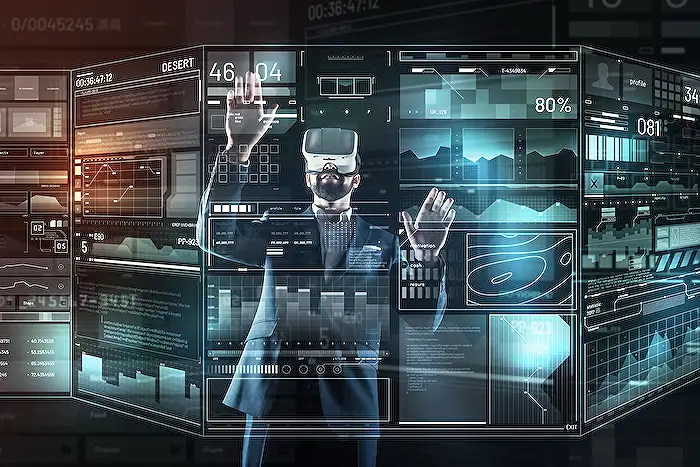
AI in the Workplace: Revolution or a Cover for Layoffs?
Consultant at Bright Ideas Agency | Digital Transformation | Microsoft 365 | Modern Workplace
AI impacts business with layoffs at Microsoft Build; key themes: AI, layoffs, future of work. Products: Azure, Office 365, Cortana
Key insights
- Artificial Intelligence (AI) is being rapidly integrated into business operations at major tech companies like Microsoft, Google, and Amazon, leading to increased automation and changes in workforce needs.
- The adoption of machine learning and automation allows companies to boost efficiency, automate repetitive tasks, and cut operational costs, which can result in fewer roles for humans in certain areas.
- AI systems are designed to learn from data, adapt over time, and support better decision-making by analyzing large volumes of information quickly and accurately.
- The current wave of AI integration is notable for its speed and scale, creating both new job opportunities and a significant need for upskilling due to an emerging skills crisis.
- This transformation raises ethical questions about balancing technological progress with social responsibility; companies are now expected to offer retraining programs and push for policies that protect workers affected by automation.
- The debate continues on whether AI is primarily used as an excuse for layoffs or if it truly represents a shift toward innovation and productivity—success will depend on how well businesses and society manage this transition.
Introduction: AI and the Wave of Tech Layoffs
The rapid adoption of Artificial Intelligence (AI) continues to reshape the technology sector, raising questions about its true impact on the workforce. In a recent episode by Nick DeCourcy of Bright Ideas Agency, the focus shifts to whether AI is genuinely revolutionizing business or simply serving as a convenient reason for mass layoffs. This discussion follows major announcements from industry leaders like Microsoft, Google, and Anthropic, alongside the notable news of 6,000 layoffs at Microsoft. As these trends gain momentum, it becomes crucial to understand the technology, its benefits, and the broader implications for employees and businesses alike.
The Technology Behind AI-Driven Decisions
At the heart of this debate lies the technology itself—AI driven by machine learning and automation. These advancements are rapidly being integrated into core business operations, promising to enhance productivity and streamline traditional workflows. Companies such as Microsoft are leveraging AI to automate tasks ranging from code generation to customer service, which can significantly reduce the need for certain roles within their organizations.
However, the rapid pace of AI integration also introduces new challenges. While the technology promises efficiency, its implementation often means that roles previously performed by humans are now handled by intelligent systems. This shift demands a careful balance between embracing innovation and managing its impact on employment opportunities within the tech industry.
Advantages and Tradeoffs of AI Implementation
The advantages of adopting AI are clear. Efficiency and productivity gains are among the most cited benefits, as AI systems can handle repetitive or data-intensive tasks with greater speed and accuracy than their human counterparts. Additionally, automating routine processes frees up employees to focus on more creative and strategic work, which can drive long-term innovation.
Yet, these benefits come with tradeoffs. The drive for cost savings—especially during periods of economic uncertainty—often leads companies to restructure their workforce, sometimes resulting in layoffs. While automation can help businesses remain competitive, it also raises ethical questions about the responsibility of organizations to support affected workers. Striking a balance between leveraging AI for growth and maintaining a committed workforce remains a complex challenge for modern enterprises.
The Basics and New Developments in AI Integration
Understanding the basics of AI technology is essential for grasping its role in recent layoffs. AI systems excel at learning and adapting through advanced algorithms, allowing them to process vast amounts of data, make predictions, and inform business decisions. This capability enables organizations to automate functions that previously required manual intervention, such as data analysis and customer support.
What is new about this approach is the sheer scale and speed of AI adoption across industries. As AI tools become more sophisticated, businesses are undergoing significant structural changes. This rapid transformation creates both opportunities and challenges, including an emerging skills gap that highlights the need for upskilling and reskilling existing employees to align with new AI-driven strategies.
Challenges and Ethical Considerations
As companies embrace these technological advancements, they must also consider the social and ethical implications. The pressure to deploy AI responsibly is increasing, with stakeholders calling for robust retraining programs and policies that protect workers displaced by automation. Addressing these concerns is essential to ensure that the benefits of AI are distributed fairly and do not disproportionately impact vulnerable segments of the workforce.
Moreover, the ongoing debate challenges businesses to move beyond seeing AI solely as a means to cut costs. Instead, there is a growing expectation for organizations to use AI as a tool for innovation, while also fostering a culture of continuous learning and adaptation. This approach can help mitigate the negative effects of workforce reductions and promote a more sustainable future for both companies and employees.
Conclusion: Navigating the AI Revolution
In summary, Nick DeCourcy’s analysis highlights that while AI may be a factor in recent layoffs, it is also a powerful driver of transformation and progress. The real test for businesses lies in how they balance the pursuit of efficiency with their responsibilities to employees and society. As the AI revolution unfolds, proactive adaptation and ethical leadership will be key to ensuring that technological advancements lead to shared prosperity rather than increased inequality.

Keywords
AI layoffs debate AI job automation impact AI workforce reduction AI technology and employment AI layoff trends 2025 AI ethics in layoffs future of work with AI corporate layoffs and AI